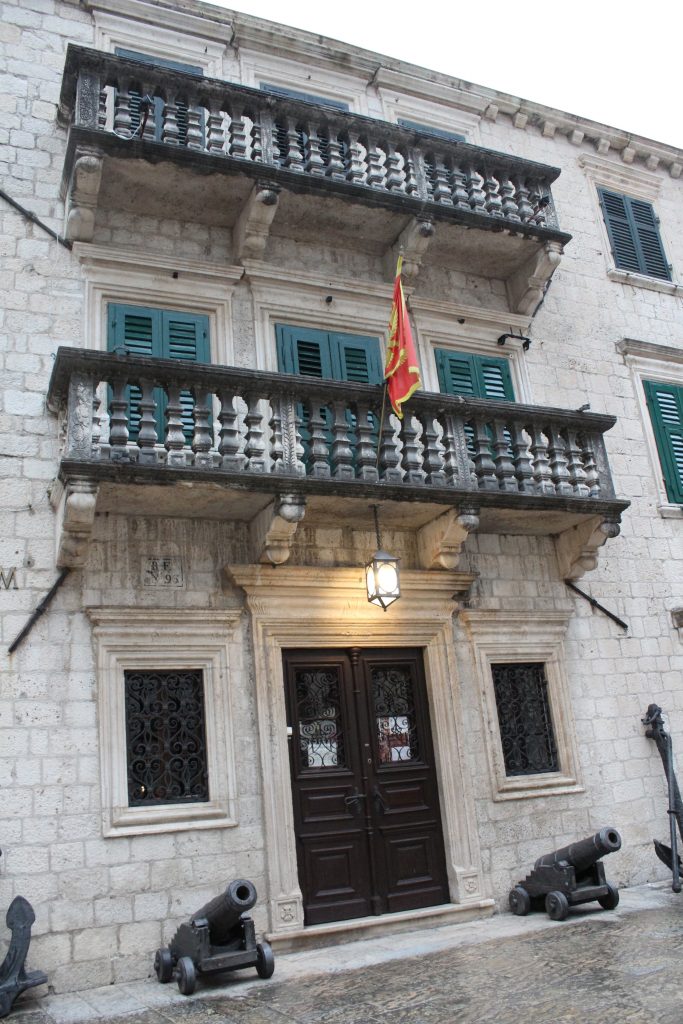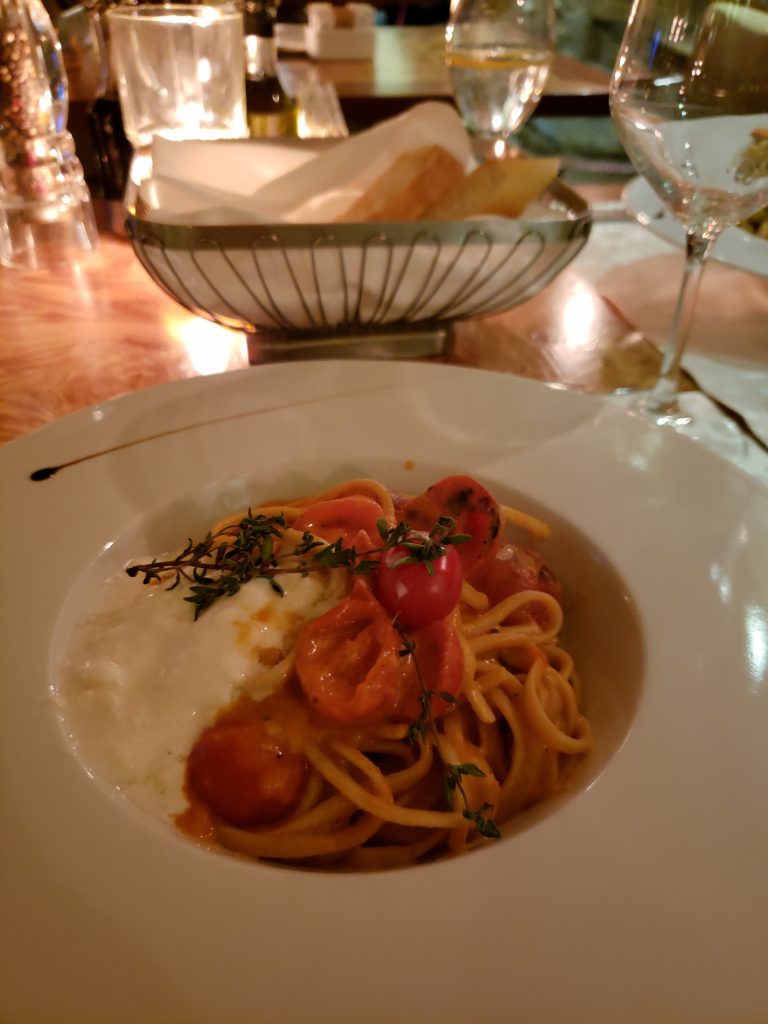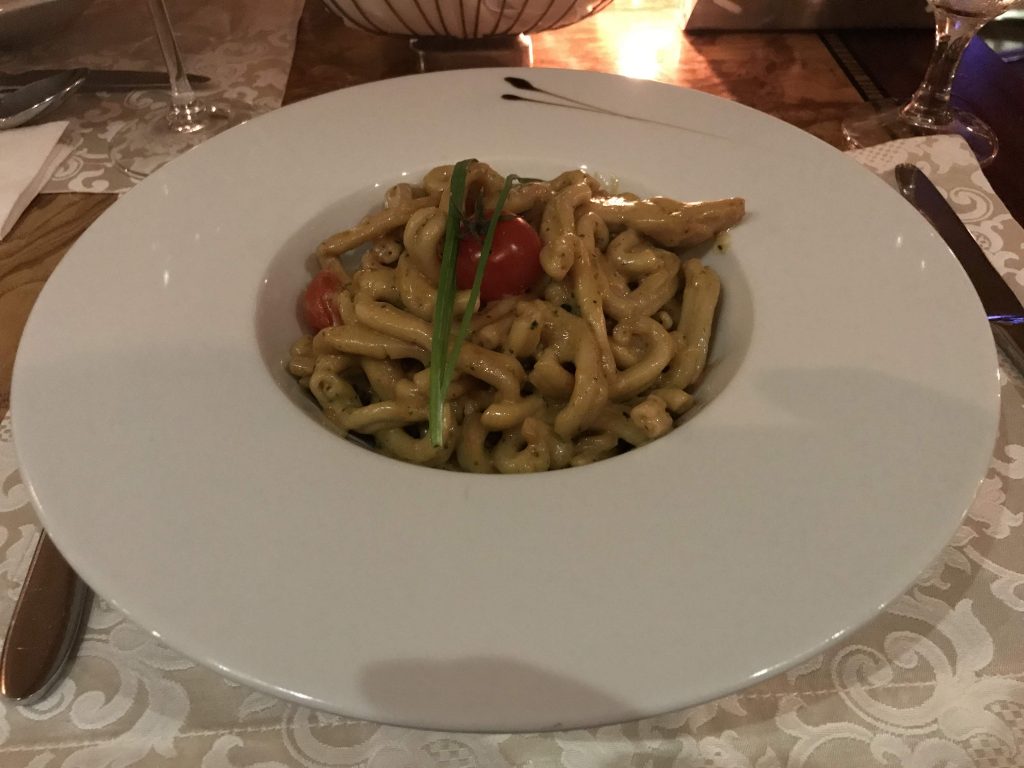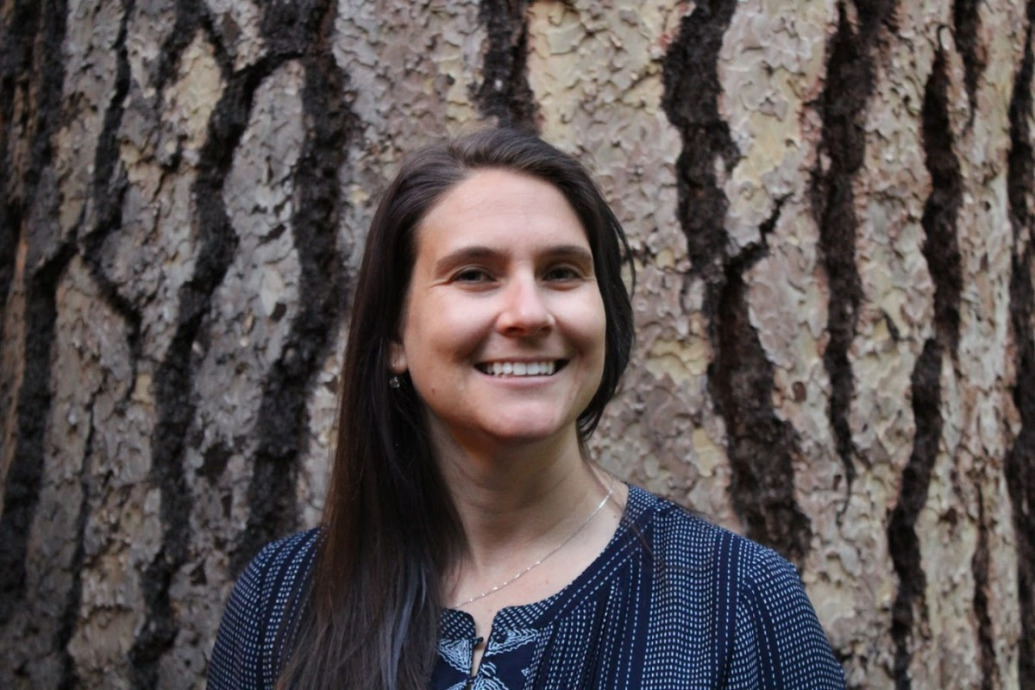We wheeled our suitcases from the parking lot and easily found our lodging in Kotor, Hotel Vardar, at the end of the entrance square. Check-in was easy and they had a parking spot open up in their lot – farther away but 10 Euros a day. We immediately went and moved our car after checking in.

This was a proper hotel, and we felt it was a huge upgrade since our Dubrovnik room – it was nice to have a little space.

We set out to see the city for the remaining daylight hours and thought a walking tour would be a good idea. It was around 1630, however, and all the tour agencies were closed and next availability online would be the following day. So we went back to reception and asked if the hotel could arrange anything – and they did. A guide, Nina, showed up almost immediately, we negotiated a fair price of 30 Euros total and she met us back at 1800 to commence the tour.
The weather held up at first, but after about 30 minutes it started to rain, then pour, then pour cats and dogs. In between, we still managed to have a very good tour, and Nina Zekovic (from 360 Monte tour agency), even though she was dressed exquisitely, hung in there through the bad weather without complaint.
The tour started outside the Kotor gate, where she explained the history of Kotor and the history of Montenegro. Kotor was first mentioned in Roman times, BC. Then came the Slavs, then the Byzantine (Eastern Roman) Empire which originated in the modern name Kotor. In between Byzantine rule, Kotor was occupied and/or ruled by a series of foreign powers – the First Bulgarian Empire, the Serbian Empire, and the Kingdom of Hungary
Then came the Venetians – and Kotor was actually under Venetian protection from 1420 to 1797, a significant period of time. The ruler of Kotor asked Venice for protection against the threat of Ottoman rule, who were able to capture the city briefly and rule intermittently. Venice also gave Kotor the name Càttaro, which we enjoyed because this was another cat city.
Kotor then passed briefly to the Hapsburg Empure in 1797, and then was transferred to Napoleon in 1805, although in fact it was held by the Russians. Then it went back to the Hapsburgs and ultimately became part of the Austro-Hungarian Empire in to World War I, after which it was part of Yugoslavia and follows a similar history as the other Balkan countries. Literally every European foreign power has been here! Montenegrins do consider themselves Montenegrins today, but Kotorians are a bit more schizophrenic about their identity.
The front gate of the city of Kotor reflects the Yugoslavian liberation and a quote by Tito. Everyone here remembers him as the man that said no to Stalin, Nina explained. They have fond memories of that period due to the economic development and prosperity they saw during the post World War II years. On the picture on the right, showing Kotor’s walls, you can see Venice’s coat of arms with an open book, which means Kotor was under its protection. A closed book, Nina explained, means it’s been conquered.
We then walked through the main gate (also known as the Seagate) and saw a ruin of what used to be the Austrian post office drop box – legend has it that this one was for informants to turn in their neighbors who may be rebelling against the Empire. Now you are supposed to stick your hands in ad make a wish.

Continuing inside the gate, we stopped at the clock tower, where Nina explained the original clock in the center is Viennese, and then when Napoleon came in, he made a replica to show that he could do anything as well as the Austrians.

Here’s a view from the main square (Arms Square), and you can see a stage setup to celebrate the Montenegrin Independence Day the following day – with all night parties and a band playing until 0200 (not fun if you’re trying to sleep!).

Kotor is a city of squares, and our tour was broken up by visiting 4 different squares. The first square we visited after the Arms Square is Flour Square . Here we were told a story about a man who was an orphan and rose from poverty through maritime trading to be very wealthy. The name he was given as a last name translated roughly to “homeless”. Hundreds of years later, his heir (who as embarrassed by this name) fought to change the name to “owner of 100 homes” but sadly died after he acquired 90 or so houses, not being able to achieve the goal of the name change.


Next, we moved to the square with the oldest churches – St. Tryphone Square. This is when the rain started – you can see the storm moving in on the picture in the left. The church, St. Tryphone Cathedral, was built in the 12th century.
Then we continued on, trying to stay dry with a shared umbrella, to Museum Square, home of the Maritime Museum. It initially belonged to one of the most important families in Kotor – the Grgurin family. There is also another church in this square – an Episcopal Church.

The final square we visited was St. Luca’s Square, named after the Eastern orthodox church built originally as a Catholic church in the 12th century. The Catholic pope granted that it could be converted to an Eastern Orthodox church due to lack of use. Because of this, it actually has two alters. In the Eastern orthodox church, there is a screen in front of the priest, where only the clergy can pass.

There are a few other churches in this square as well.
Our final square, which was brief, was Cinema Square. This is where the famous “Cats” museum is located, where you can learn about the historic importance of cats in Kotor as well as in general. It was raining cats and dogs by this point, so we quickly jumped through rapidly pooling water to make our way back in to the hotel lobby. We said goodbye to Nina and thanked her for her flexibility. It was a good tour considering the weather!

That night, we decided to eat at the restaurant at Hotel Astoria (this was the building that belonged to the “homeless” family). It was rated highly on Trip Advisor and was actually pleasantly surprising for a hotel restaurant.
We started with some drinks – I had some Malvazija and Brendan had a series of elaborate cocktails.
We shared an eggplant tower as an appetizer as well as a salad. For the mains, I ordered a simple pomodoro pasta and Brendan ordered a pesto fusili (when something says pesto it really means alfredo because it seems to have an element of cream).
We ate our desserts so quickly they were hard to snag pictures of – but Brendan ordered a lava cake with ice cream and I ordered the cookie parfait (the cookies turned out to disappointingly be waffle cone!).

We thought the meal was quite good – we just wished smoking wasn’t allowed indoors!
On the way back to the hotel, we walked by the Arms Square to see what we would be in for as far as loud music blaring throughout the night. We wanted to watch the final episode of Game of Thrones in our hotel room, but weren’t sure we could with the live music just steps away.

Turns out, we made Game of Thrones work, but it was very hard to hear even after closing all the windows. The music went until 0100, about the time we had finished Game of Thrones and went to bed. It was fun watching the series finale right after getting the Game of Thrones tour in Dubrovnik the previous day. Fortunately we had our sound machine, which drowned a lot of the Euro-metal out.









[…] you can basically max out the Kotor old town and historical context in a day, we were able to use our second day to relax as well as hiking Kotor. Even though we only […]